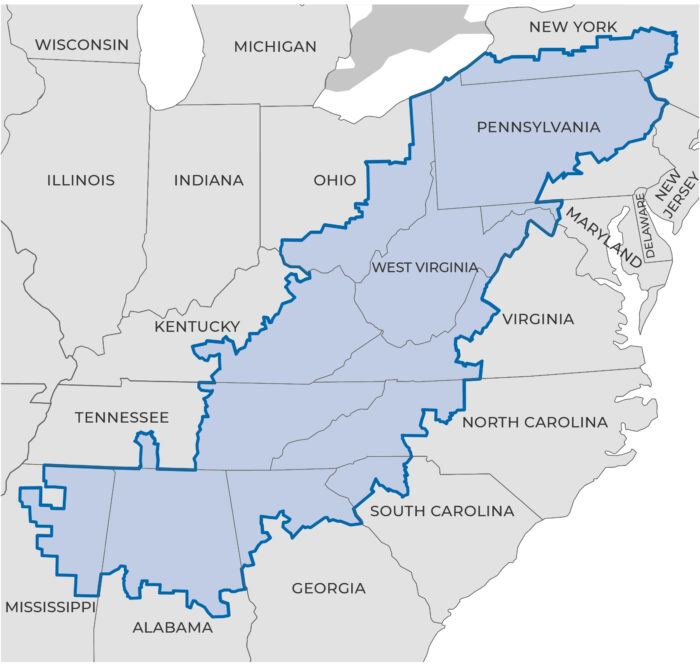There are approximately 26.1 million residents living in poverty in the Appalachian regions in the United States. The per capita income is 23% lower than the U.S. average. One in every three people lives in poverty.
The Appalachian Regional Development Act can be traced back to President John F. Kennedy. During his campaign for presidency, he toured West Virginia and saw firsthand the despair in Appalachia. The state’s governors formed the Conference of Appalachian Government in 1960 and Kennedy kept a campaign promise by inviting the group to meet with him and top federal officials in Washington. After President Kennedy was assassinated in 1963, the commission’s recommendations were delivered to President Johnson and he saw they were quickly transformed into legislation.
The President’s Appalachian Regional Commission (ARC) was established by Congress in 1965, and led by Franklin D. Roosevelt Jr. The purpose was to bring Appalachia into the mainstream of the American economy. President Johnson signed the Appalachian Regional Development Act on March 9, 1965.
The 206,000-square-mile region includes 423 counties in 13 states. All of West Virginia is included, as well as parts of Alabama, Georgia, Kentucky, Maryland, Mississippi, New York, North Carolina, Ohio, Pennsylvania, South Carolina, Tennessee, and Virginia. Fifty-two of Tennessee’s ninety-five counties are located within the Appalachian Region. There are 2.9 million residents in the region.
The Region also comprises three federally recognized and five state recognized Native American Tribal Communities. Tribal entities are in Appalachian Alabama, Georgia, Mississippi, New York, and North Carolina.
The objectives of the ARC in Tennessee are to decrease the number of distressed counties to ten by 2025. The region received 40 million dollars in grant funding and made a commitment for 4, 400 jobs. The counties are graded by Distressed, At Risk, or Transitional. Distressed counties receive the most funding-80%, At Risk-70%, and Transitional 50%.
The distressed counties in Tennessee are Fentress, Scott, Clay, Jackson, Bledsoe, Grundy, and Morgan. Hancock and Cocke counties are considered at risk. In these counties, the economy is based on agricultural and manufacturing. These mostly rural counties are growing more slowly than the rest of the state and losing population.
In Tennessee, Jamestown located in Fentress County, is the poorest town. This county located in Middle Tennessee borders Kentucky. The town residents average approximately $18,000 yearly. The poverty rate is 46.7%. Factories and manufactures closed and shifted from a goods-based town to service based. Older citizens receive approximately $575 a month in Social Security benefits. Reportedly, drug abuse is high in town.
According to ARC in TN, the focus areas are:
- Build Businesses
- Workforce Ecosystems
- Community Infrastructure
- Regional Culture and Tourisms
- Leaders and Local Capacity
Some goals of the focus areas include:
- Economic opportunities
- Develop entrepreneurs and local businesses
- Develop infrastructure and create jobs
- Develop broadband infrastructure
- Build a ready workforce and provide training
- Align program with Governor Lee’s “GIVE” Program
- Access to STEAM training
- Complete highway system and local roads
- Develop and preserved natural and cultural assets
- Develop local food assets
- Leadership and community capacity to build skills for the next generation
- Improve public safety and health
This list is just a sample of the goals. I did not know the extent of the ARC. I subscribed to the TN Appalachian Regional Commission newsletter to gain knowledge and share information.
Francie Mae. April 27, 2023
References:
Appalachian Regional Commission. Website. Accessed. April 27, 2023.
arc.gov/tennessee/ Website. Accessed April 20, 2023.
The West Virginia Encyclopedia. Appalachian Regional Commission. Website. Accessed April 27, 2023.
